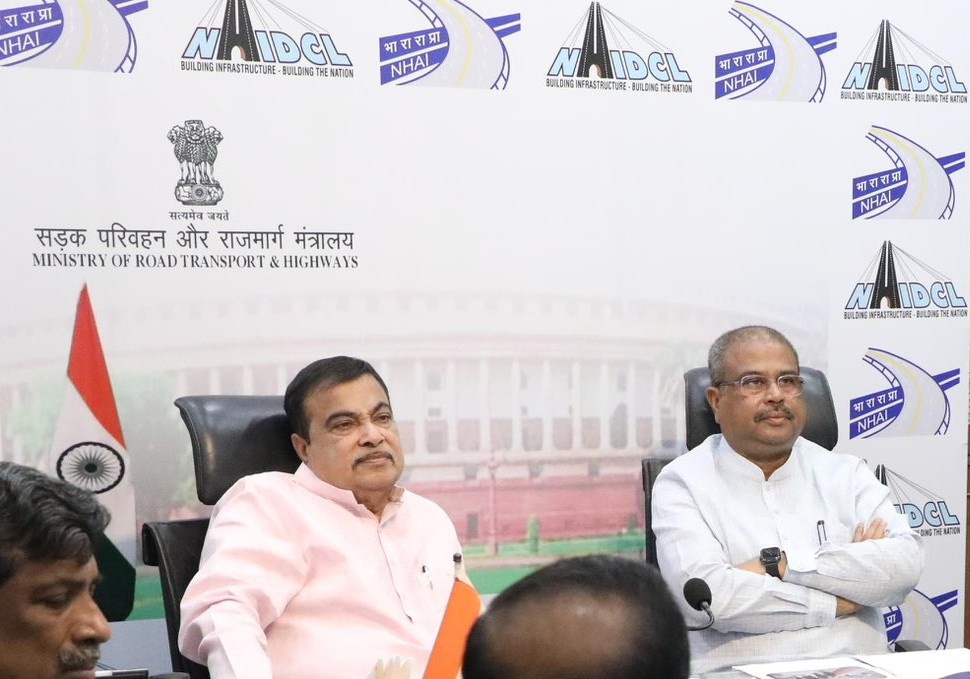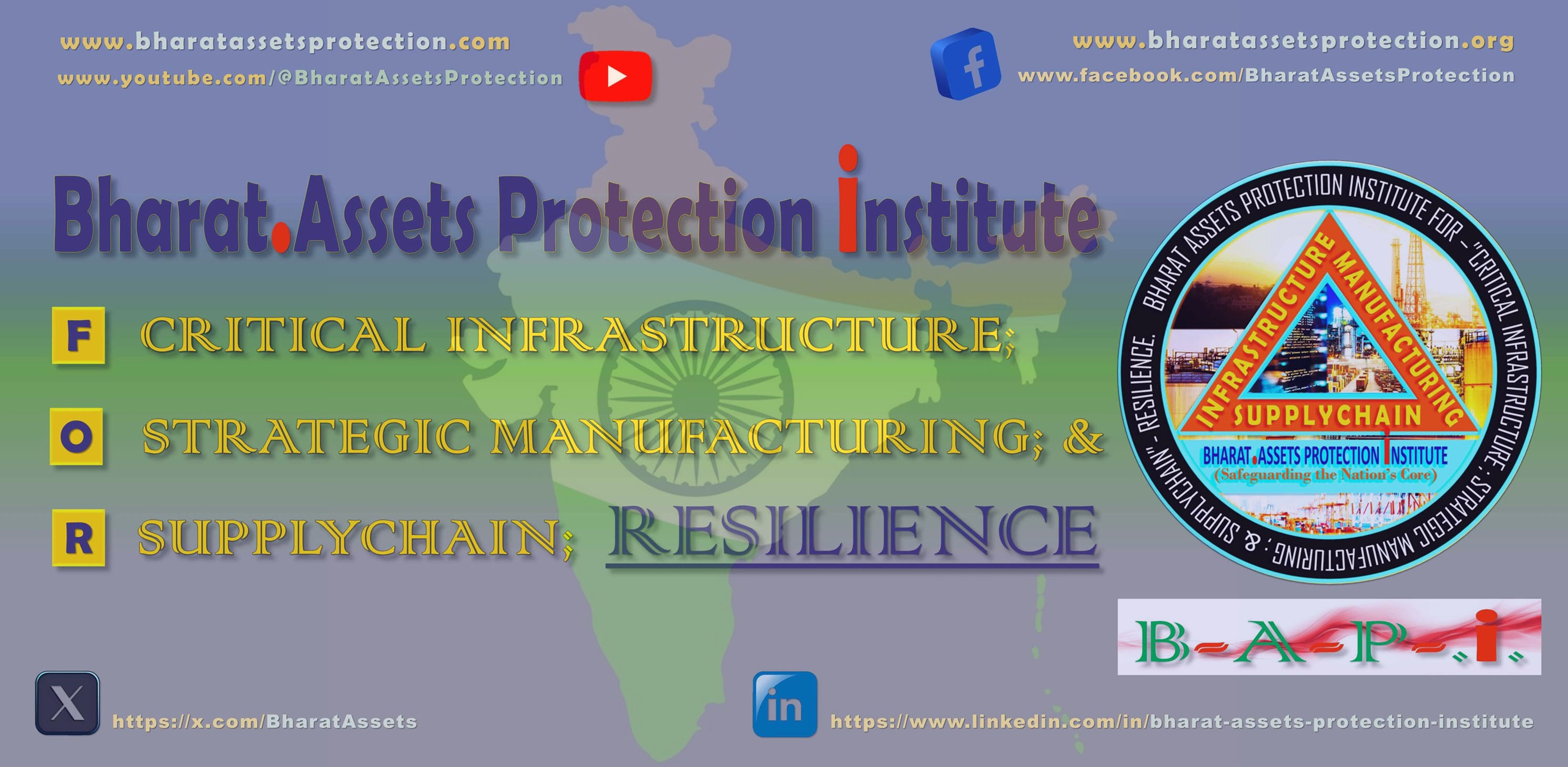
Article Keywords : Road Safety, Central–State Coordination, Driver Training and Licensing, Sadak Suraksha Abhiyaan, Ministerial Initiatives

Title: Aligning Ministerial Initiatives with Ground-Level Execution:
Bridging the Policy–Practice Divide in India’s Road Safety Framework
Written
On: 16 April 2025 | Updated on 10 October 2025
Category:
Internal
Security Management Specifics
Sub-Category:
Advanced
Traffic Management
Author:
Dr
Padmalochan Dash/Bharat Assets Protection Institute
Author’s
Note: The focus is on how policy ambition meets on-ground
execution, where gaps often decide life and death. Observations are drawn
entirely from public government documents cited below.
Introduction:
India’s
road-safety crisis has moved far beyond a transport issue; it now threatens
both public health and national security. According to the Ministry of Road
Transport & Highways (MoRTH), the nation logged 4,61,312 road accidents in
2022, causing 1,68,491 deaths and 4,43,366 injuries. That means roughly
nineteen people die every hour on Indian roads. Preliminary 2023 data show
little improvement. That alone is alarming.
The hardest-hit
demographic—citizens aged fifteen to forty-nine—represents India’s most
productive age group. Each loss weakens the country’s economic core. Under
Union Minister Nitin Gadkari, MoRTH has advanced key reforms: the Motor
Vehicles (Amendment) Act
2019, the nationwide Sadak Suraksha Abhiyaan, and an initiative with the
Ministry of Education (MoE) to teach road safety in schools. Together they
signal clear intent to address legal, behavioural, and educational gaps.
Still, coordination remains
fragile. Even strong laws falter when state execution lags. A centrally guided
but locally adapted national framework—one that joins departments and empowers
states—is vital if fatalities are to fall.
2. The
Ministerial Drive: National Intent
The Motor Vehicles Amendment
became a legislative turning point. It raised fines, tightened licence rules,
mandated safety standards, and renewed transport oversight. Alongside it stands
MoRTH’s 4 E’s strategy—Education, Engineering, Enforcement, and Emergency
care—which frames the country’s policy backbone.
The Sadak Suraksha Abhiyaan
expanded mass-awareness drives, targeted high-risk corridors, and tried to
reshape everyday road use. The MoE curriculum initiative is equally
forward-looking, embedding caution and discipline in young learners. On the
engineering side, the Vehicle Scrappage Policy and mandatory safety
technologies such as ABS, airbags, and tyre-pressure systems show that safety
is being built into vehicles as well as highways.
Ambition, however, must turn
into proof. The question is no longer *what* should be done but *how well*
reforms perform in states and districts.
3. Ground Reality: Fatalities Rising Despite
Reform
If present measures were working, accident
numbers would decline. Instead, they keep climbing. In 2022 crashes rose 11.9
percent and deaths 9.4 percent over 2021. Though national highways make up
barely two percent of the road network, they saw 36.2 percent of total
fatalities. Analysts at the Transportation Research & Injury Prevention
Centre (TRIP Centre), IIT Delhi, point to weaknesses in data management,
trauma-care coordination, and inter-departmental control (Tiwari, Goel, &
Bhalla, 2023).
Independent sources suggest
that many fatalities never reach official records—pushing the actual toll close
to 2.7 lakh in 2022 (Suresh, 2025). The pattern is clear: frameworks exist, but
inconsistent state execution and poor monitoring undercut results.
4. Driver
Training and Licensing: A Neglected Front
In principle, a licence should certify
competence. In practice, it often doesn’t. Many transport offices issue
licences with minimal testing, ignoring defensive-driving or hazard-response
skills.
MoRTH’s Accredited Driver
Training Centres (ADTCs) and AI-based testing pilots are promising, yet
coverage is uneven. Hence, inadequately trained drivers remain on the roads,
and risky habits—mobile-phone use, speeding, and helmet neglect—continue unchecked.
To fix this,
India should:
a. Create uniform standards
for training centres and instructor certification.
b. Add behavioural modules
on distraction, fatigue, and speed control.
c. Adopt simulation-based
testing instead of rote exams.
d. Require commercial
drivers to undergo periodic re-testing.
e. Driver competence must
become measurable, not assumed.
5.
Infrastructure and Enforcement: From Policy to Pavement
Poor design, missing
signage, and unsafe crossings plague many states. In one large rural region,
over seventy percent of accidents occurred on straight roads—caused by
unregulated speed, not complexity.
Technology offers partial
hope. Integrated Traffic Management Systems (ITMS) with cameras, lane-violation
sensors, and e-challan automation have improved compliance where deployed, but
integration remains patchy.
To close the
gap between policy and pavement, India should:
a. Run regular safety audits
in every district.
b. Maintain public
black-spot inventories with fixed remediation budgets.
c. Link violation data,
accident records, and audit findings in one live dashboard.
6.
Institutional Convergence: The Missing Link
Fragmentation erodes results. MoRTH designs
policy, states issue licences, police enforce laws, public-works bodies
maintain roads, and health departments manage post-crash care. Acting
separately, they dilute overall impact.
Few states have empowered
Road Safety Authorities (RSAs). Kerala’s Integrated Road Accident Database
(iRAD) shows the potential of real-time data-sharing among police, transport,
and health departments, yet most states still lag.
A practical answer lies in
creating a National Road Safety Coordination Council (NRSCC) under MoRTH to
align central policy with state execution. Each state would prepare an annual
Action Plan tied to measurable goals—such as halving deaths by 2030 in line
with WHO objectives (World Health Organization, 2023). Funding should hinge on
outcomes: deaths per 100,000 vehicles, black-spot fixes, and training
coverage.
7. Policy
Blueprint for 2025 and Beyond
India now needs a
performance-driven roadmap built on collaboration and accountability.
7.1 Empower
State-Level Road Safety Authorities
a. Operationalise RSAs
in every state by end-2025.
b. Set clear mandates,
budgets, and coordination lines.
7.2 Link
Central Funding to Performance
a. Release funds only
when states meet targets: reduced deaths per 100,000 vehicles, corrected
black-spots, and trained drivers.
7.3 Overhaul
Driver Training and Licensing
a. National
accreditation of training centres and instructors.
b. Mandatory simulation
testing and regular renewals for commercial drivers.
7.4 Integrate Infrastructure and
Enforcement
a. Maintain state-wide
accident-zone records.
b. Conduct annual
safety audits through Public Works departments.
c. Expand automated
monitoring and analytics.
7.5 Expand
Behavioural and Educational Outreach
a. Roll out school
curricula nationwide.
b. Promote community
programs for two-wheeler users and pedestrians.
7.6 Build
Unified Data and Monitoring Systems
a. Integrate licensing,
enforcement, accident, and trauma-care data.
b. Publish State-wise
Road Safety Scorecards annually.
7.7 Frame Road Safety as Economic and National
Security Priority
a. Treat road safety as
a pillar of resilience.
b. Recognise that each
young death reduces national productivity.
c. Embed metrics in the
Bharat National Resilience Index (BNRI).
7.8 Develop
Rural and Context-Specific Strategies
a. Address rural roads
and two-wheeler risks.
b. Pilot district-level
Zero Fatality Corridors customised to local needs.
8.
Conclusion
India’s persistent rise in road fatalities
reflects weak execution more than weak policy. The laws exist, as do awareness
drives and political intent. What’s lacking is the connective tissue between
national vision and ground-level delivery. Every hour nineteen Indians die on
the road. They are not statistics but workers, students, and families whose
loss hurts national strength. The way forward requires synchronized effort —
law, education, enforcement, and engineering working together. Only then will
the goal of Safe Roads for All shift from aspiration to achievable
reality.
9.
References
Ministry of Road Transport
& Highways. (2022, October 30). Road accidents in India 2022. Government of
India. https://morth.nic.in/sites/default/files/RA_2022_30_Oct.pdf
Press Information Bureau. (2023, October 31).
Ministry of Road Transport and Highways releases annual report on "Road
Accidents in India – 2022". Government of India. https://pib.gov.in/PressReleasePage.aspx?PRID=1973295
Suresh, N. (2025, January
17; updated September 24, 2025). Road accident deaths. Data for India. https://www.dataforindia.com/road-accident-deaths/
Tiwari, G., Goel, R., &
Bhalla, K. (2023, December). Road safety in India: Status report 2023.
Transportation Research & Injury Prevention Centre (TRIP Centre), IIT
Delhi. https://tripc.iitd.ac.in/assets/publication/RSI_2023_web.pdf
World Health Organization.
(2023). Global status report on road safety 2023. World Health Organization. https://www.who.int/teams/social-determinants-of-health/safety-and-mobility/global-status-report-on-road-safety-2023



